Abstract
A preliminary survey of 2 073 domestic animals in the Lambwe Valley, Kenya, showed a 7.4% rate of infection with Trypanosoma congolense and T. vivax. In comprehensive surveys covering 6 384 domestic stock, pathogenic trypanosomes were found in 17.0% of cattle, 5.0% of sheep, and 2.1% of goats. Adults were more often infected than young animals, and males more often than females. T. congolense was the trypanosome most frequently diagnosed, followed by T. vivax and the T. brucei subgroup. T. theileri was also found. The examination of wet blood films in the field as a means of diagnosing trypanosome infections was shown to be valueless. More infections were detected in peripheral blood films than in systemic blood films, but both should be examined. An examination of smears of glandular fluid is essential for the diagnosis of T. vivax in cattle, while mouse-inoculation tests are necessary for the diagnosis of the T. brucei subgroup. The detection of T. vivax was improved by the high-speed centrifugation of blood samples in capillary tubes.
Full text
PDF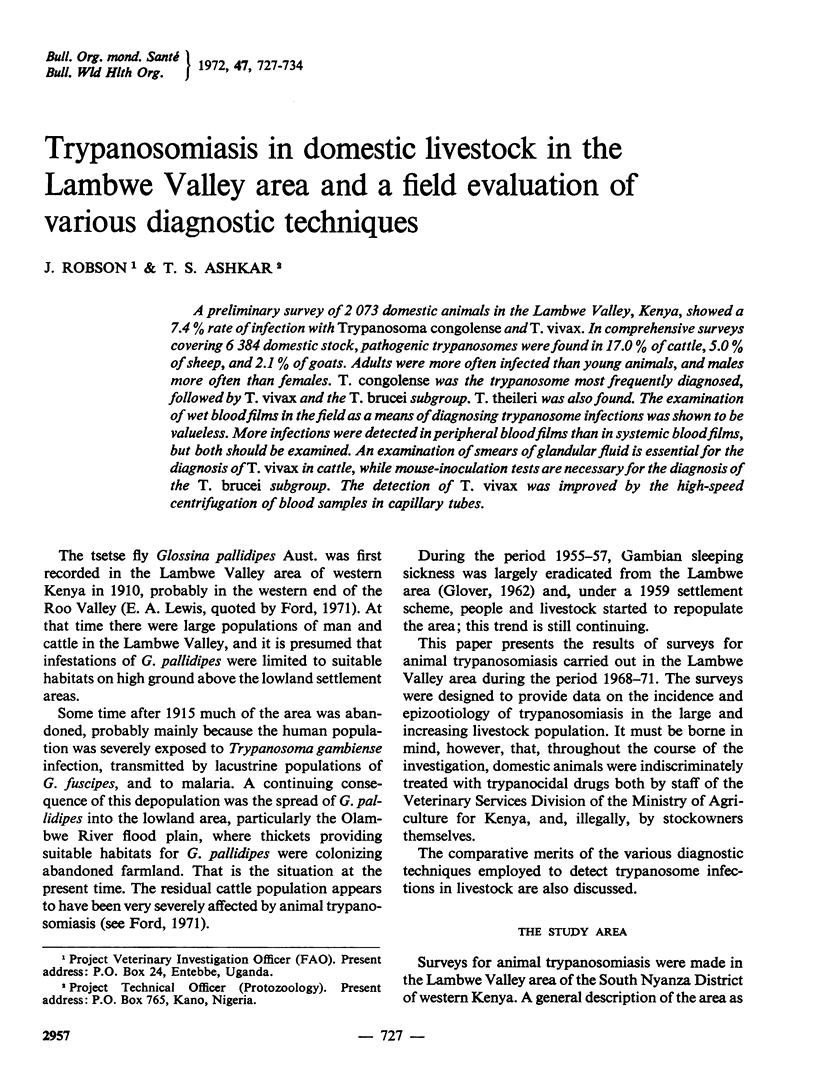
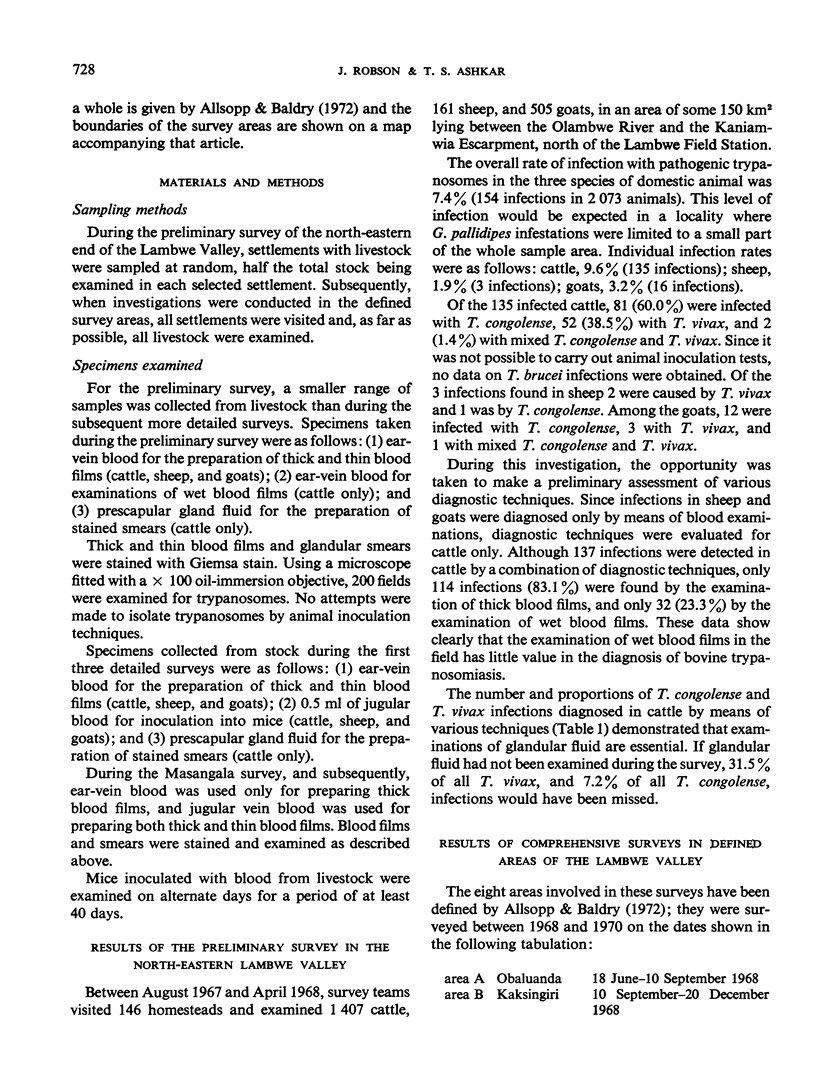
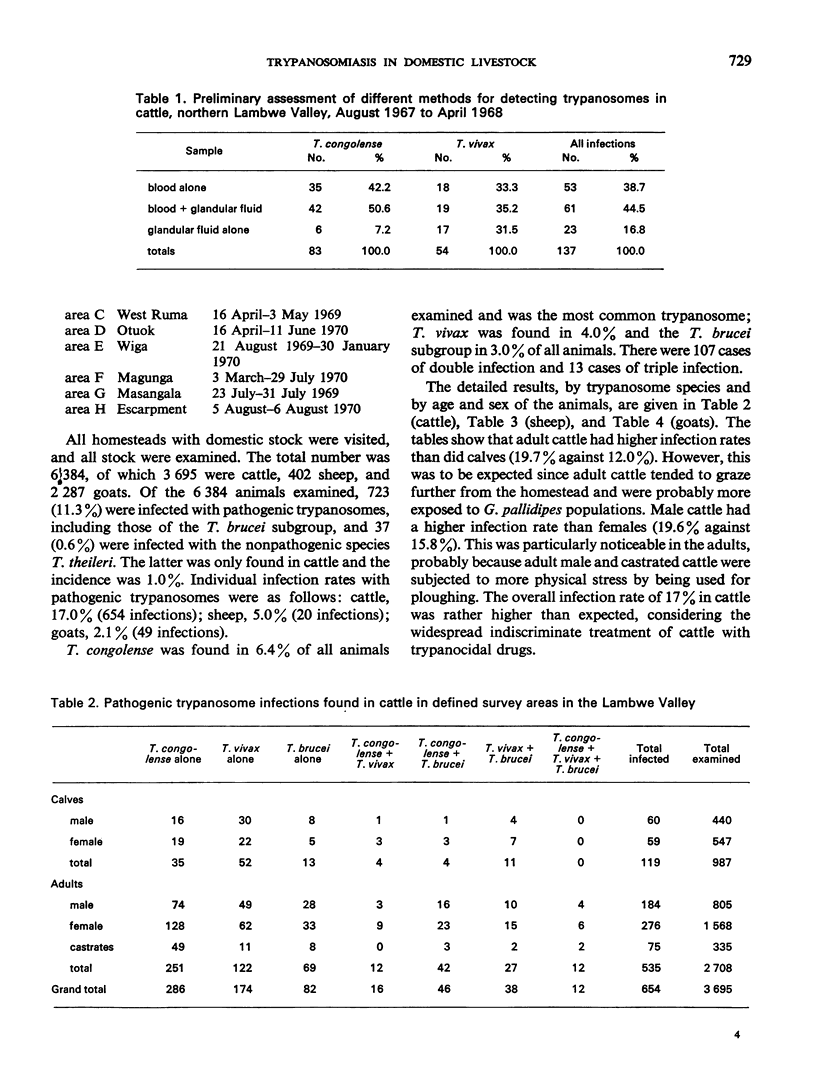
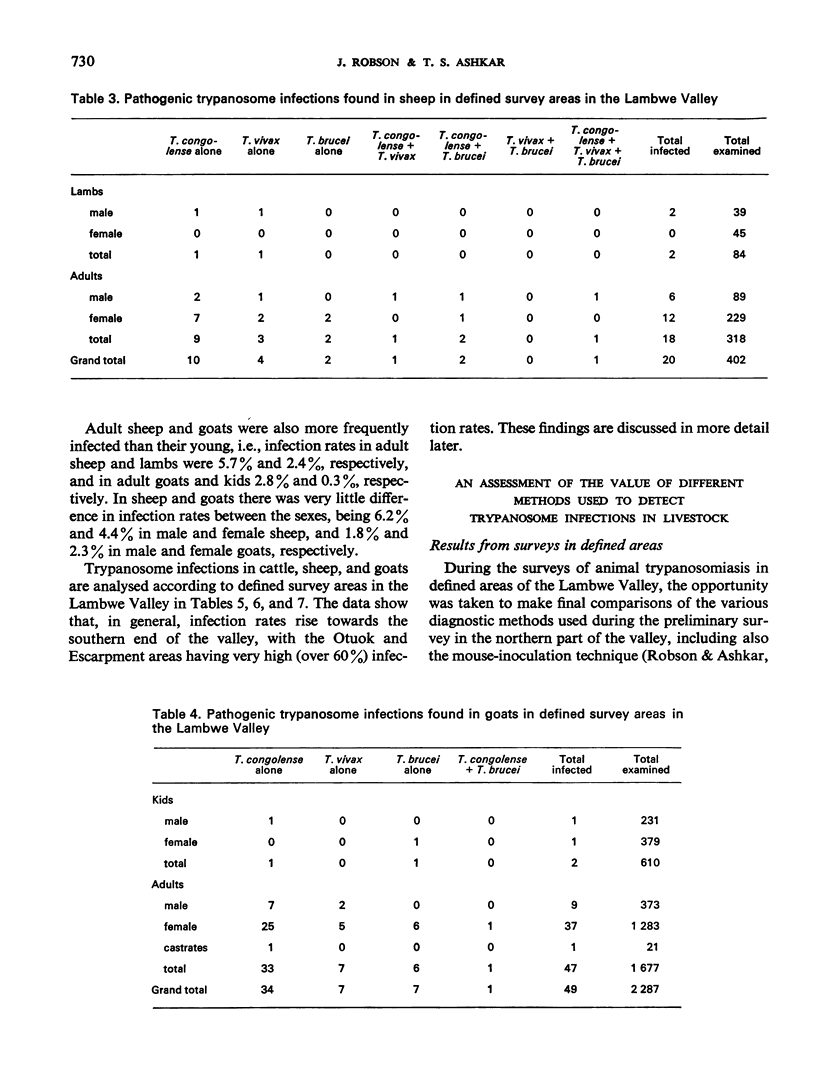
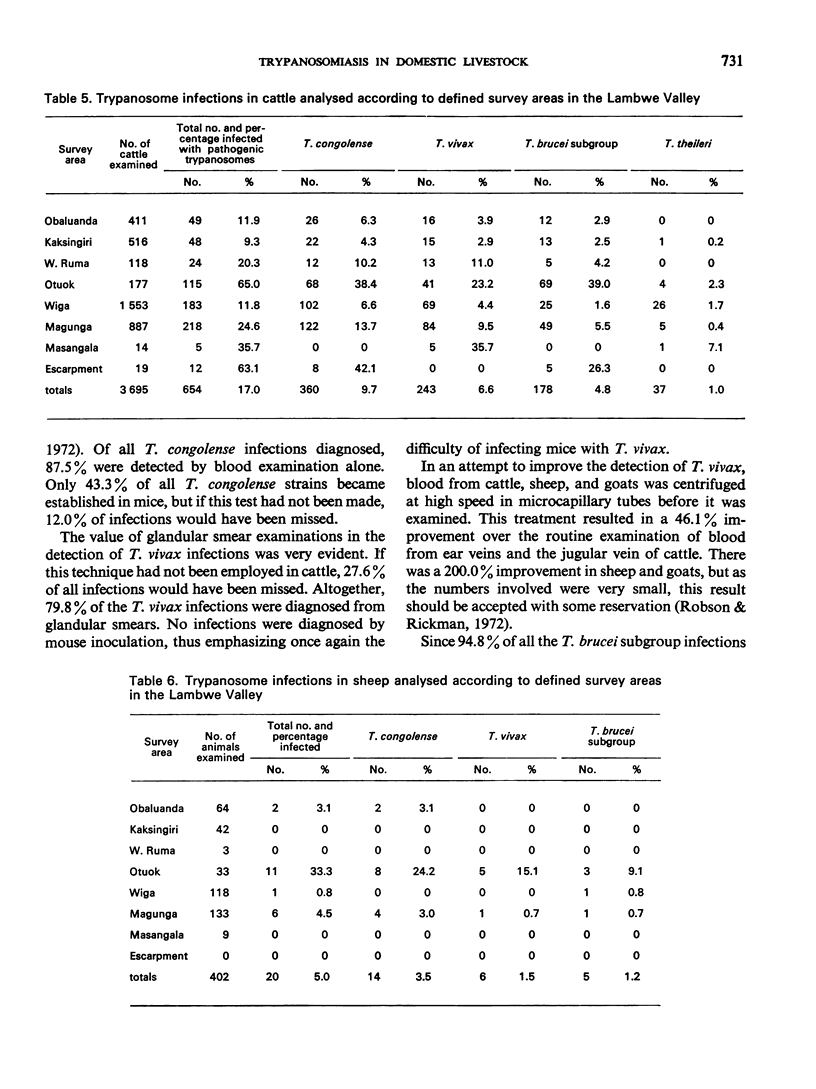
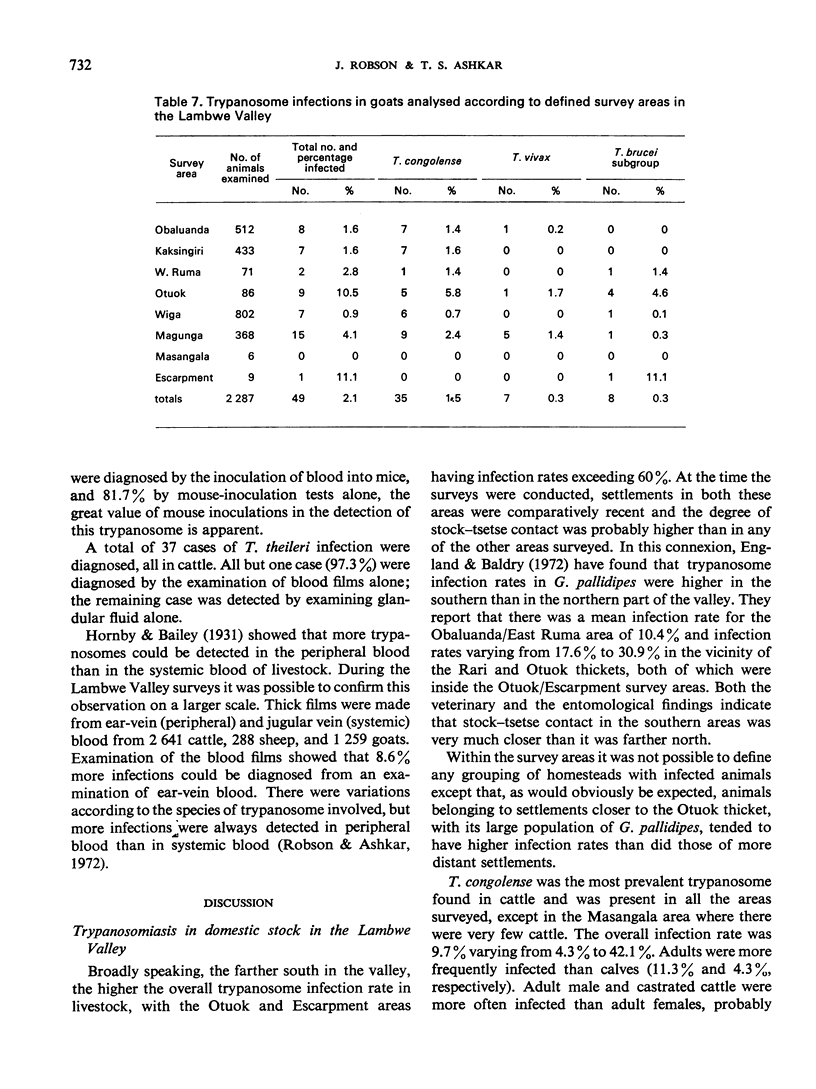
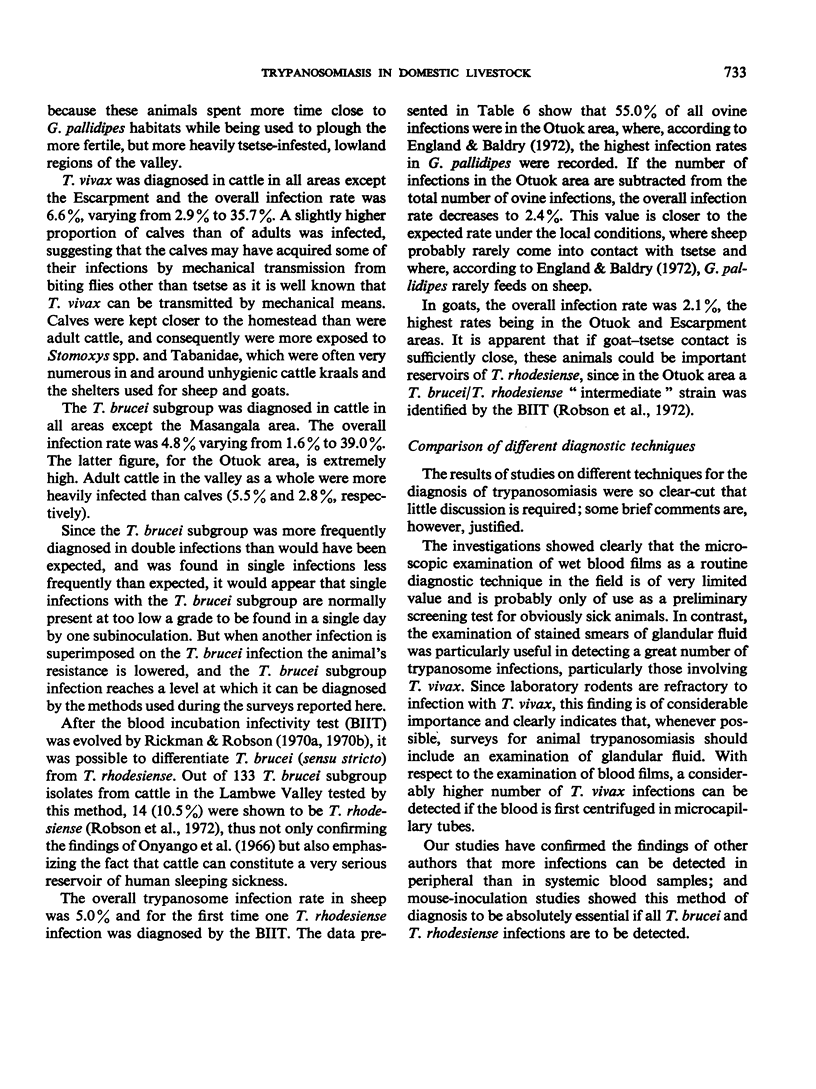
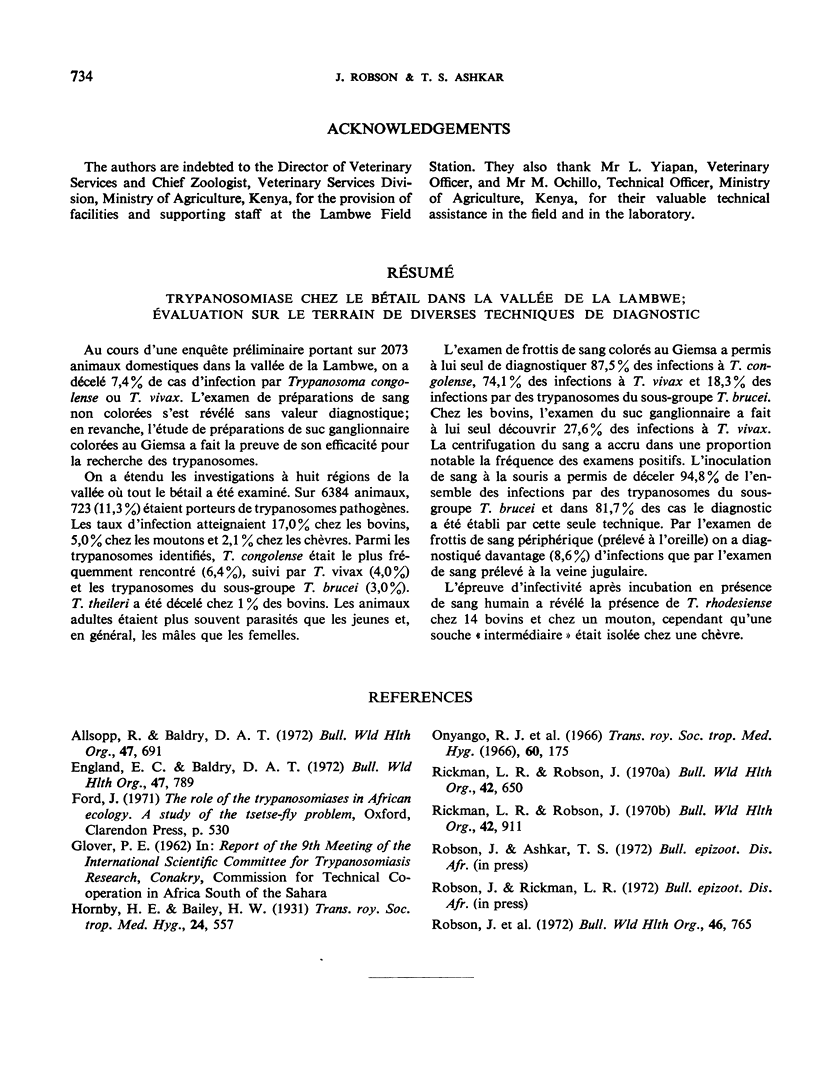
Selected References
These references are in PubMed. This may not be the complete list of references from this article.
- Allsopp R., Baldry D. A. A general description of the Lambwe Valley area of South Nyanza District, Kenya. Bull World Health Organ. 1972;47(6):691–697. [PMC free article] [PubMed] [Google Scholar]
- England E. C., Baldry D. A. Observations on the relative attractiveness to Glossina pallidipes of different animal baits, a tsetse trap, and a fly-round patrol. Bull World Health Organ. 1972;47(6):789–793. [PMC free article] [PubMed] [Google Scholar]
- Onyango R. J., Van Hoeve K., De Raadt P. The epidemiology of Trypanosoma rhodesiense sleeping sickness in Alego location, Central Nyanza, Kenya. I. Evidence that cattle may act as reservoir hosts of trypanosomes infective to man. Trans R Soc Trop Med Hyg. 1966;60(2):175–182. doi: 10.1016/0035-9203(66)90024-1. [DOI] [PubMed] [Google Scholar]
- Rickman L. R., Robson J. The blood incubation infectivity test: a simple test which may serve to distinguish Trypanosoma brucei from T. rhodesiense. Bull World Health Organ. 1970;42(4):650–651. [PMC free article] [PubMed] [Google Scholar]
- Rickman L. R., Robson J. The testing of proven Trypanosoma brucei and T. rhodesiense strains by the blood incubation infectivity test. Bull World Health Organ. 1970;42(6):911–916. [PMC free article] [PubMed] [Google Scholar]


